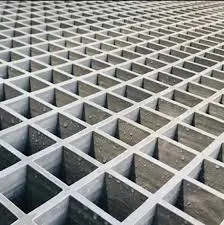
-
 Afrikaans
Afrikaans -
 Albanian
Albanian -
 Amharic
Amharic -
 Arabic
Arabic -
 Armenian
Armenian -
 Azerbaijani
Azerbaijani -
 Basque
Basque -
 Belarusian
Belarusian -
 Bengali
Bengali -
 Bosnian
Bosnian -
 Bulgarian
Bulgarian -
 Catalan
Catalan -
 Cebuano
Cebuano -
 China
China -
 China (Taiwan)
China (Taiwan) -
 Corsican
Corsican -
 Croatian
Croatian -
 Czech
Czech -
 Danish
Danish -
 Dutch
Dutch -
 English
English -
 Esperanto
Esperanto -
 Estonian
Estonian -
 Finnish
Finnish -
 French
French -
 Frisian
Frisian -
 Galician
Galician -
 Georgian
Georgian -
 German
German -
 Greek
Greek -
 Gujarati
Gujarati -
 Haitian Creole
Haitian Creole -
 hausa
hausa -
 hawaiian
hawaiian -
 Hebrew
Hebrew -
 Hindi
Hindi -
 Miao
Miao -
 Hungarian
Hungarian -
 Icelandic
Icelandic -
 igbo
igbo -
 Indonesian
Indonesian -
 irish
irish -
 Italian
Italian -
 Japanese
Japanese -
 Javanese
Javanese -
 Kannada
Kannada -
 kazakh
kazakh -
 Khmer
Khmer -
 Rwandese
Rwandese -
 Korean
Korean -
 Kurdish
Kurdish -
 Kyrgyz
Kyrgyz -
 Lao
Lao -
 Latin
Latin -
 Latvian
Latvian -
 Lithuanian
Lithuanian -
 Luxembourgish
Luxembourgish -
 Macedonian
Macedonian -
 Malgashi
Malgashi -
 Malay
Malay -
 Malayalam
Malayalam -
 Maltese
Maltese -
 Maori
Maori -
 Marathi
Marathi -
 Mongolian
Mongolian -
 Myanmar
Myanmar -
 Nepali
Nepali -
 Norwegian
Norwegian -
 Norwegian
Norwegian -
 Occitan
Occitan -
 Pashto
Pashto -
 Persian
Persian -
 Polish
Polish -
 Portuguese
Portuguese -
 Punjabi
Punjabi -
 Romanian
Romanian -
 Russian
Russian -
 Samoan
Samoan -
 Scottish Gaelic
Scottish Gaelic -
 Serbian
Serbian -
 Sesotho
Sesotho -
 Shona
Shona -
 Sindhi
Sindhi -
 Sinhala
Sinhala -
 Slovak
Slovak -
 Slovenian
Slovenian -
 Somali
Somali -
 Spanish
Spanish -
 Sundanese
Sundanese -
 Swahili
Swahili -
 Swedish
Swedish -
 Tagalog
Tagalog -
 Tajik
Tajik -
 Tamil
Tamil -
 Tatar
Tatar -
 Telugu
Telugu -
 Thai
Thai -
 Turkish
Turkish -
 Turkmen
Turkmen -
 Ukrainian
Ukrainian -
 Urdu
Urdu -
 Uighur
Uighur -
 Uzbek
Uzbek -
 Vietnamese
Vietnamese -
 Welsh
Welsh -
 Bantu
Bantu -
 Yiddish
Yiddish -
 Yoruba
Yoruba -
 Zulu
Zulu
fiberglass ducts demonstrate exceptional resistance against ...
The Exceptional Resistance of Fiberglass Ducts A Comprehensive Overview
In the world of HVAC (Heating, Ventilation, and Air Conditioning) systems, the materials used for ducts play a crucial role in ensuring efficiency and durability. Among the various materials available, fiberglass ducts have emerged as a popular choice due to their exceptional resistance to various environmental factors. This article explores the remarkable characteristics of fiberglass ducts, focusing on their resistance to moisture, corrosion, and fire, as well as their overall benefits for heating and cooling applications.
Moisture Resistance
One of the standout features of fiberglass ducts is their impressive resistance to moisture. Unlike traditional metal ducts, which can rust and corrode when exposed to high levels of humidity or water, fiberglass ducts are inherently resistant to dampness. This attribute is particularly beneficial in areas with high moisture levels, such as basements, bathrooms, or kitchens.
Moisture buildup in ducts can lead to numerous issues, including the growth of mold and mildew, which not only compromises indoor air quality but can also pose serious health risks. Fiberglass ducts’ non-porous surface minimizes the risk of condensation, effectively preventing the accumulation of moisture that could foster these harmful organisms. As a result, HVAC systems utilizing fiberglass ducts can maintain cleaner air, contributing to a healthier living environment.
Corrosion Resistance
Corrosion is another significant concern for HVAC systems, especially in industrial settings or in environments where corrosive chemicals may be present. Metal ducts are particularly susceptible to rust and corrosion over time, which can lead to leaks and system inefficiencies. In contrast, fiberglass ducts are made from reinforced plastic, which is highly resistant to corrosive substances. This durability allows for uninterrupted operation in diverse environments, ultimately extending the lifespan of the ductwork.
When installed in settings that may experience chemical exposure, such as manufacturing facilities or laboratories, fiberglass ducts help prevent failures that can arise from corrosion
. The ability to resist various chemicals without degrading over time translates to lower maintenance costs and less frequent replacements, making fiberglass an economically advantageous option.fiberglass ducts demonstrate exceptional resistance against ...

Fire Resistance
In addition to their resistance to moisture and corrosion, fiberglass ducts also exhibit excellent fire resistance properties. While fiberglass itself is not entirely fireproof, it can withstand higher temperatures compared to many other materials. It is important to note that fiberglass ducts are often treated with fire-retardant chemicals to enhance their resistance to ignition and flames.
This fire-resistant quality is critical in residential and commercial buildings where fire safety is a priority. In the event of a fire, fiberglass ducts are less likely to contribute to the flames or release harmful smoke, providing occupants with precious extra moments for evacuation. This characteristic makes fiberglass an ideal choice for any situation where fire hazards are a concern.
Energy Efficiency and Insulation Properties
Beyond just their resistance to external factors, fiberglass ducts contribute to improved energy efficiency. They come with excellent insulation properties, which helps to minimize energy loss during heating and cooling processes. By maintaining the desired temperature within the ducts, less energy is required to provide consistent heating and cooling throughout a space. This leads to substantial cost savings on energy bills over time, making fiberglass ducts a wise choice for environmentally conscious consumers.
Conclusion
In summary, fiberglass ducts stand out in the HVAC market for their exceptional resistance to moisture, corrosion, and fire, alongside their energy-efficient characteristics. These ducts leverage modern material science to provide a reliable and durable option for both residential and commercial applications. With environmental safety and economic efficiency at the forefront of contemporary design, fiberglass ducts represent a transformative solution in enhancing indoor air quality while significantly reducing maintenance costs. As buildings become increasingly complex and energy-efficient, the role of materials like fiberglass will only grow in importance, underscoring the significance of their exceptional resistance in modern HVAC systems.









